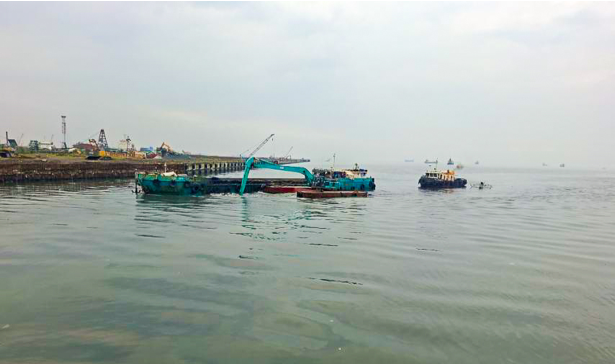At least 10 potential operators have expressed interest in the planned PHP32.8-billion Malpalla Electric Ferry System, a transport initiative that aims to connect Manila Bay, the Pasig River, and Laguna Lake using electric-powered vessels.
Department of Transportation (DOTr) Chief Communications Development Officer John Patrick Dayao said the agency gathered expressions of interest during ongoing consultations with stakeholders, including shipbuilders and local government units. The Malpalla project on Tuesday during the Norway–Philippines Electric Ferries Conference in Makati.
However, Dayao clarified that these expressions of interest are still subject to further market sounding activities, which form part of the continuing consultations for the project’s feasibility study (FS).
According to Dayao, there could be two potential implementation options: Operation and maintenance and acquisition of vessels by a concessionaire; or Division of the contract into separate subcontracts for different components.
As part of its consultation process, the DOTr is also coordinating with the Philippine Ports Authority (PPA) to ensure the project aligns with other initiatives toward establishing an intermodal transport system.
The Public-Private Partnership (PPP) Center is preparing the feasibility study with support from the Asian Development Bank (ADB). Dayao said the project’s financing structure has yet to be finalized, given its substantial cost. Package 1 of the project alone is already estimated at PHP22 billion.
Since the project’s objective is to establish a clean and sustainable water transport system, Dayao said the ferries are expected to be fully electrified.
He added that the feasibility study will also determine the potential builders of the electric ferries and whether the vessels can be manufactured locally. Based on the DOTr’s initial estimates, the Malpalla ferry system will require a total of 101 vessels.
It may be recalled that the Maritime Industry Authority (MARINA), together with the Department of Science and Technology (DOST) and the University of the Philippines (UP), launched the MB Dalaray—the country’s first electric passenger ferry designed and built by Filipinos.
MALPALLA project overview
The Malpalla project, spearheaded by the PPA and the DOTr’s Water Transport Planning Division, is estimated to cost PHP 32.8 billion (around USD 561 million). Package 1 is targeted to begin operations by 2029.
The ferry network will consist of four interconnected services: Pasig River Ferry Service, Marikina River Ferry Service, Manila Bay Ferry Service, and Laguna de Bay Ferry Service
A total of 35 ferry stations will be strategically located to connect business districts, residential zones, and tourism areas. Together, these routes will create a continuous, multi-modal corridor extending from the western coast along Manila Bay to the eastern edge of Laguna de Bay.
For the Pasig River system, there will be 21 ferry stations—a mix of existing and under-construction terminals. The Marikina River Ferry Service will have eight stations, while both the Manila Bay and Laguna de Bay services will each have three stations.
Based on the latest passenger feasibility study, the system is projected to serve over 10,000 passengers daily during its first year of operation, with ridership expected to increase to more than 30,000 passengers per day as services expand.
Construction of the Pasig and Marikina River systems is targeted from 2027 to 2029, with 75 vessels to be deployed upon completion. Package 2, which will expand operations to Manila Bay and Laguna Lake, is scheduled from 2033 to 2034, with operations expected to begin in 2035 using additional vessels.




